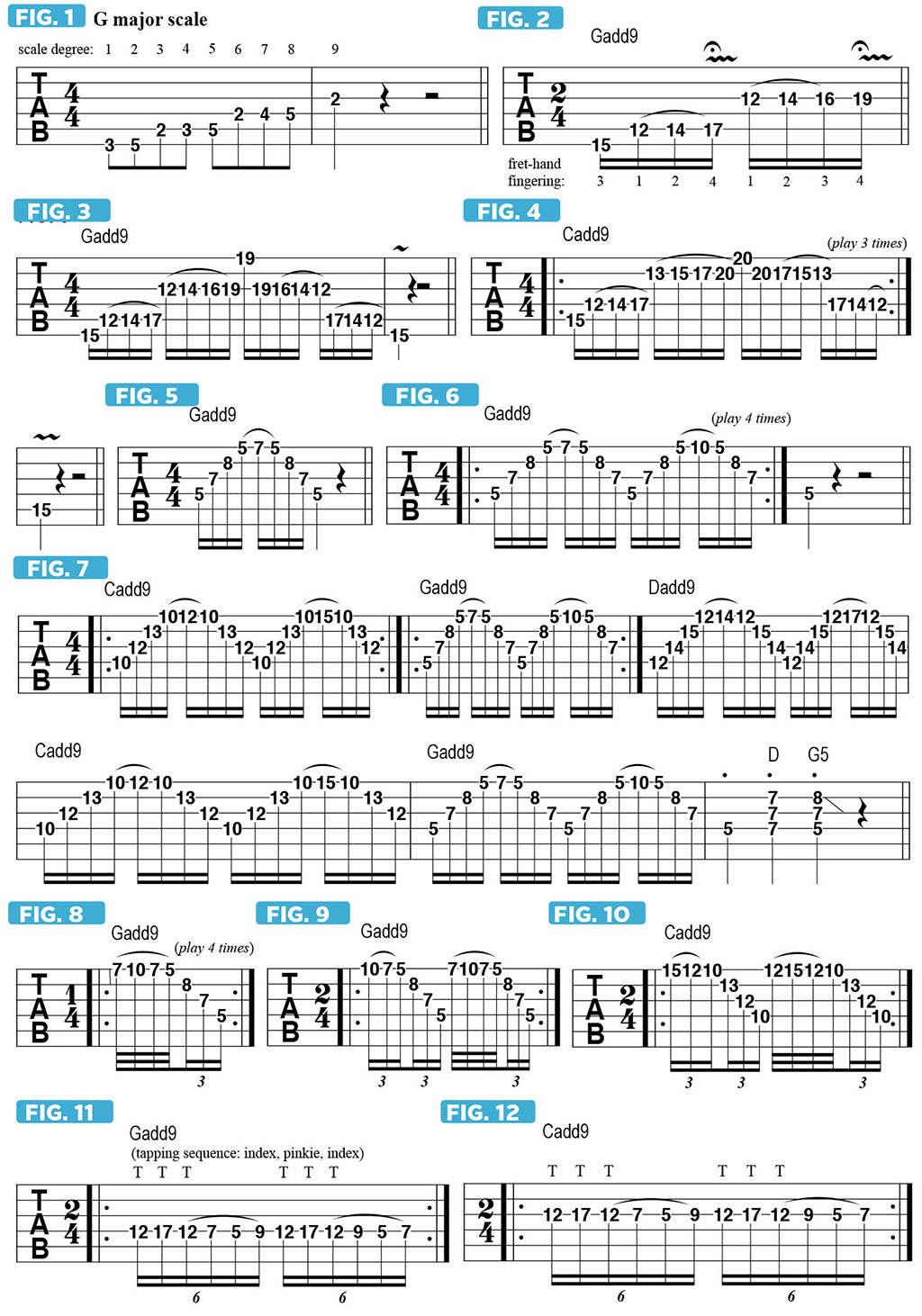Adding the Ninth to Arpeggio-Based Licks
Learn what adding the ninth can do for your arpeggio-based lines.
One of my favorite things to do when playing arpeggio-based lines is add the ninth, also known as the second. You may ask, “What does it mean to add the ‘ninth?’ ” As is often the case, the best thing to do when seeking an answer to a music theory question is to go back to the major scale: FIGURE 1 shows the G major scale played across one octave. When I repeat the second scale degree, A, in the second octave, it’s referred to as the ninth, since it’s the ninth note played when counting upwards from our starting G note. The G major arpeggio is spelled G B D; if we add the second/ninth, we get G A B D.
FIGURE 2 demonstrates this concept. Starting in 12th position, I fret G on the low E string’s 15th fret with my ring finger, followed by three notes on the fifth string, A B D, which I fret with the index finger, middle finger and pinkie, using a double hammer-on to sound the B and D notes. I then skip over the D string to the G note at the third string’s 12th fret and play four consecutive notes on that same string, G A B D, using a triple hammer-on to sound the A, B and D notes.
Now let’s add a high B note, first string/19th fret, fretted with the pinkie, as shown in FIGURE 3. Try running this pattern repeatedly up and down, gradually building up speed while striving for clear note articulation. I find that this technique offers a nice diversion to arpeggio-based lines without utilizing sweep picking.
We can easily transpose our line up a fourth, to make reference to the key of G’s four chord, C. As FIGURE 4 shows, one can simply shift each note one string higher at the same fret, with the exception of the high C, which is on the same string as the previous example’s high B note, only one fret higher now.
In FIGURE 5, I’ve spread the arpeggio out across a G power chord on the D, G and B strings and add the ninth on the high E string. I hybrid pick this lick, using the pick in conjunction with my middle and ring fingers. FIGURE 6 offers a cool variation that alternates between two different notes on the high E string, and FIGURE 7 transposes the pattern to C and D.

FIGURE 8 starts with the hammer-pulls on the first string, elaborated on in FIGURE 9 with alternating shapes on the first string, and transposed to C in FIGURE 10.
Our final examples incorporate tapping: in FIGURES 11 and 12, I use my pick-hand index finger and pinkie to alternately tap the D and G strings, followed by pull-offs and hammer-ons. Work out the patterns slowly and then gradually increase to shred-approved tempos.
New York CIty guitarist Joel Hoekstra plays for Whitesnake, the Trans-Siberian Orchestra, Cher and his own side project, Joel Hoekstra’s 13, whose latest release is Dying to Live. Find out more at joelhoekstra.com.
Get The Pick Newsletter
All the latest guitar news, interviews, lessons, reviews, deals and more, direct to your inbox!









![Joe Bonamassa [left] wears a deep blue suit and polka-dotted shirt and plays his green refin Strat; the late Irish blues legend Rory Gallagher [right] screams and inflicts some punishment on his heavily worn number one Stratocaster.](https://cdn.mos.cms.futurecdn.net/cw28h7UBcTVfTLs7p7eiLe.jpg)
